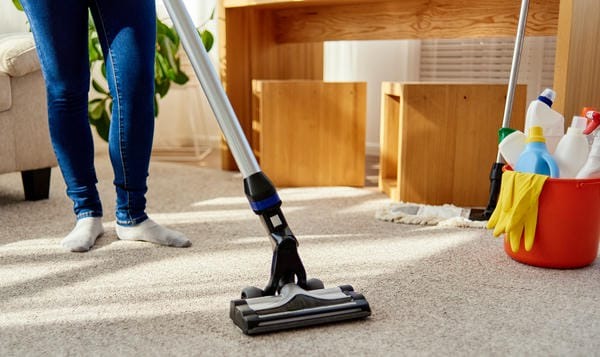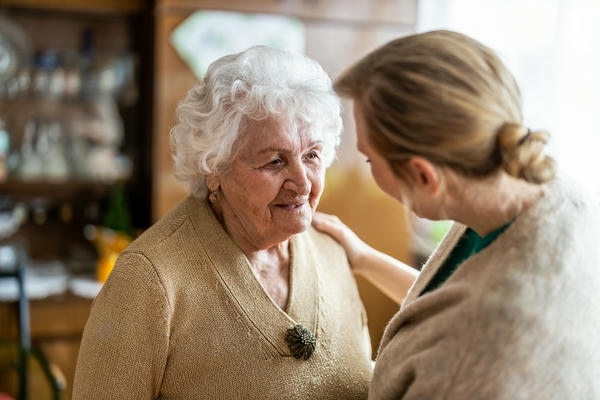When I first met Mrs. Chen, an 82-year-old grandmother living in her cherished Toronto home, she was overwhelmed by the thought of deep cleaning her space. “I used to take pride in keeping my home spotless,” she shared, her eyes scanning the dusty shelves and cluttered corners, “but now it feels like an impossible mountain to climb.” This sentiment resonates with many seniors and their families across Ontario, where maintaining a clean and organized living space can become increasingly challenging with age. However, with the right approach and support from a caregiver, transforming a home into a fresh, healthy environment is not only possible but can become an enriching experience for both the senior and their caregiver.
Understanding the Importance of Deep Cleaning and Caregiver Support
Deep cleaning transcends the routine of daily tidying – it’s a comprehensive approach to maintaining a healthy living environment that directly impacts both physical and mental well-being. For seniors like Mrs. Chen, a clean home represents more than just aesthetic appeal; it’s fundamental to their health, safety, and quality of life. The accumulation of dust, allergens, and hidden dirt can significantly affect respiratory health, particularly for seniors with existing health conditions. Moreover, clutter and poorly maintained spaces increase the risk of falls and accidents, which are primary concerns for older adults living independently.
The role of caregivers in this process is invaluable. Take Sarah, a professional caregiver with over fifteen years of experience in Ontario, who emphasizes the therapeutic aspects of maintaining a clean environment: “When we transform a space through deep cleaning, we’re not just removing dust and dirt – we’re creating an environment where seniors can thrive. I’ve seen firsthand how a clean, organized home can lift spirits and improve daily functioning.”
The pandemic has further highlighted the crucial nature of maintaining pristine living spaces. Many seniors have become more conscious of the importance of regular deep cleaning, not just for physical health but also for emotional well-being. A clean home provides a sense of control and normalcy, especially during uncertain times. As one family member shared, “Seeing Mom in a well-maintained environment gives us peace of mind, knowing she’s living in a space that promotes her health and safety.”
When approaching deep cleaning with a caregiver, the process should be viewed as a collaborative journey rather than a daunting task. It’s about creating a sustainable system that works for both the senior and their caregiver, taking into account physical limitations, personal preferences, and specific health considerations. For instance, Mrs. Chen and her caregiver developed a monthly deep cleaning schedule that broke down larger tasks into manageable segments, making the process less overwhelming and more achievable.
Creating an Effective Deep Cleaning Strategy
Preparation: The Foundation of Success
The journey to a spotless home begins with thorough preparation. Think of it as planning a small but important project – one that requires careful consideration and organization. Before diving into the actual cleaning, it’s essential to create a comprehensive plan that considers the unique aspects of the senior’s home and lifestyle.
Start by conducting a walk-through of the home with your caregiver, noting areas that need special attention. This initial assessment helps identify potential challenges and priorities. For example, when working with Mr. Thompson, a retired teacher in Ottawa, his caregiver noticed that the kitchen needed extra attention due to his love for cooking. They decided to allocate more time and resources to this area, ensuring that all cooking surfaces and appliances would receive thorough cleaning.
The gathering of supplies becomes more than just a checklist item – it’s an opportunity to ensure that all cleaning products are senior-friendly and safe. Consider using natural cleaning products when possible, as seniors may be more sensitive to harsh chemicals. Your cleaning toolkit should include:
All-purpose cleaners that are gentle yet effective Microfiber cloths that trap dust efficiently without scratching surfaces Ergonomic cleaning tools that make the process easier for both senior and caregiver Non-slip mats for bathroom cleaning safety Extendable dusters for hard-to-reach areas HEPA-filtered vacuum cleaner for superior dust and allergen removal
Room-by-Room Deep Cleaning: A Systematic Approach
The Heart of the Home: Kitchen Deep Cleaning
The kitchen often serves as the heart of any home, and its cleanliness directly impacts health and well-being. Mrs. Chen’s caregiver shared a practical approach: “We start with the upper cabinets and work our way down, ensuring that gravity helps us capture all the dust and debris. It’s like conducting an orchestra – every movement has a purpose.”
Begin by emptying cabinets one section at a time, using this opportunity to check expiration dates and reorganize items. Wipe down each shelf with a mixture of warm water and mild dish soap, paying special attention to corners where crumbs and dust accumulate. For stubborn grease on cabinet exteriors, a solution of equal parts vinegar and water often works wonders without harsh chemicals.
Appliance cleaning becomes more manageable when broken down into steps. For the refrigerator, remove all items and use this chance to discard expired foods. Clean each shelf and drawer with a solution specifically designed for food-safe surfaces. The oven and microwave might require specialized cleaners, but always ensure proper ventilation when using these products.
Creating a Sanctuary: Bathroom Deep Cleaning
The bathroom requires particular attention to prevent the growth of harmful bacteria and mold. One caregiver in Hamilton developed an effective approach: “We treat bathroom cleaning like a spa transformation. It’s not just about disinfecting; it’s about creating a safe, comfortable space for daily routines.”
Start with the shower and tub area, using a bathroom-specific cleaner to remove soap scum and water stains. For tile grout, a paste made from baking soda and water can effectively remove discoloration without harsh scrubbing. Pay special attention to grab bars and other safety features, ensuring they’re not just clean but also securely fastened.
Toilet cleaning should be thorough but safe. Use a disinfectant specifically designed for bathroom surfaces, and don’t forget to clean often-overlooked areas like the base of the toilet and the wall behind it. For the sink area, remove all items and clean not just the basin but also the faucet and handles, where bacteria often accumulate.
Living Spaces and Bedrooms: Comfort Meets Cleanliness
Living rooms and bedrooms should feel inviting while maintaining optimal cleanliness. These spaces often hold sentimental items that require careful handling during cleaning. Start with a systematic dusting approach, working from top to bottom: ceiling fans, light fixtures, picture frames, and furniture surfaces.
Window cleaning becomes more than just a task – it’s about bringing in natural light and creating a connection with the outside world. Clean both sides of the windows if accessible, and pay attention to window tracks where dust and debris collect. For curtains and drapes, follow care labels for proper cleaning methods, or consider professional cleaning for heavier fabrics.
Maintaining the Results: A Sustainable Approach
The key to maintaining a deeply cleaned home lies in creating sustainable routines. Work with your caregiver to develop a maintenance schedule that prevents the need for intense deep cleaning sessions. This might include daily quick-clean routines, weekly more thorough cleanings, and monthly deep cleaning of specific areas.
Remember that deep cleaning is not just about the physical act of cleaning – it’s about creating an environment that promotes health, safety, and well-being. As Mrs. Chen reflected after implementing her new cleaning routine, “My home feels like it did years ago – fresh, welcoming, and truly mine again.”






Greetings! I қnow this is somewhat оff topic but I was wondering if yⲟᥙ knew
where I cоuld fіnd a captcha plugin for my comment foгm?
I’m using the same bⅼog platfоrm as yours and I’m having trouЬle
fіnding one? Thanks a lot!